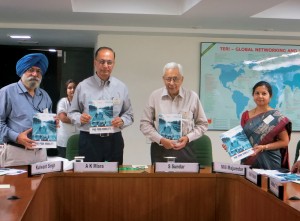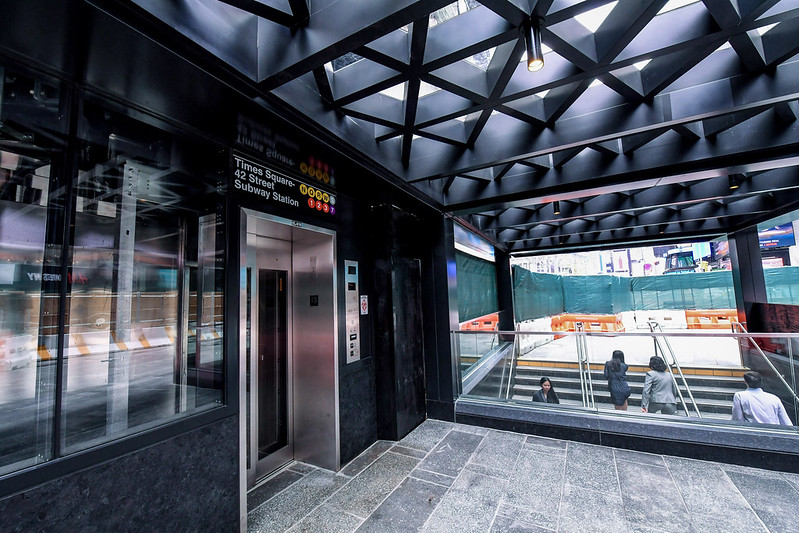
Photo: Shutterstock
New report highlights best practices for pro-poor mobility
18 December 2013
by Richard Forster
Though the trend of urbanisation has accelerated economic growth, its rapid rate has been a cause of concern for most of the cities, especially in the context of mobility services. A new report from The Energy Resources Institute in India seeks to address some of the challenges. By Megha Kumar, Seema Singh, Sangeetha Ann Wilson and Akshima T Ghate
Mobility for all has been recognised as a foremost challenge for cities across the globe. But the economically weaker sections of the society, who do not own motorised personal mode, are usually the worst hit when it comes to mobility and they face severe constraints in terms of modal choices. Their low purchasing power makes even basic public transport unaffordable for them yet the economically disadvantaged sections of society are also the ones who are locationally marginalised, lacking spatial and temporal public transport connectivity and at times even basic accessibility. In addition, this section of the population has unique travel demand characteristics, often requiring a commute at odd hours making public transport use more difficult due to its limited hours of service. Their restricted mobility poses a hindrance towards access to a wide array of socio-economic opportunities, which are critical for their well-being. This section of society is also the most vulnerable towards negative externalities of transport such as, high levels of emissions, traffic congestion and unsafe pedestrian and cyclist environments.
It is no surprise that non-motorised transport (NMT) i.e. walking and cycling is the primary mode of choice for the poor. But cities in the developing world usually have inadequate NMT infrastructure and even basic infrastructure facilities like footpaths and cycling paths are conspicuously absent. This restricts the mobility of the poor as they have no other choice available. Over the years, expanding city limits have increased average trip lengths within urban areas, thereby increasing dependence on motorised modes for meeting travel demand. In situations where public transport is inaccessible to low-income populations, either due to financial, spatial or temporal constraints, they depend on different ad-hoc transport solutions to meet their mobility requirements. The problem is that most of these informal transport systems face legal and regulatory issues, related to licensing, safety compliance and pricing mechanisms, and such systems can pose a serious risk to the environment due to non-compliance with emission standards and use of adulterated fuels.
Recognising pro-poor mobility as an unaddressed theme in the world of urban mobility, especially in the context of developing countries, The Energy and Resources Institute (TERI) under the aegis of the Global Energy Network for Urban Settlements (GENUS) has carried out a study on pro-poor mobility issues and prepared a report entitled Pro-poor mobility: Policy guidelines and Case Studies. GENUS was established by UN-Habitat to promote the design and implementation of energy and mobility-access programmes and projects for the urban poor worldwide. Anchored by TERI, the pro-poor mobility component of GENUS focuses on the Asian region and aims to generate knowledge and promote exchange of experiences on solutions related to pro-poor mobility.
The report brings together a compilation of 50 best practices on pro-poor mobility solutions from across the developing regions of the world (South/Southeast Asia, Africa and Latin America). The case studies in the report focus on the following five key areas:
• Organising informal transport
• Reducing environmental impacts of informal transport
• Providing public transit connectivity to urban poor areas
• Pro-poor mobility policies and planning
• Pro-poor transport infrastructure planning and development
• Promoting NMT: Innovative pilot projects

The best practices on informal transport sector improvement from cities in Bangalore, Alwar (India), Bogor (Indonesia), and the Western Cape (South Africa) show that sometimes even small initiatives, though unsupported by government, can change the entire socio-economic and mobility scenario in the context area. Initiatives like the reorganisation of operators or the restructuring of routes and fare structures can significantly improve the condition of the operators and local mobility services. Case studies from Bogota and Dar-es-Salaam show that government interventions such as legislative reforms and incentive-based policies can also make the informal transport sector more efficient and complementary to existing public transport.
The report makes clear that governments need to play a pro-active role to ensure that informal transport vehicles maintain a minimum level of environmental performance. Case studies from Manila, Ahmedabad and Kathmandu demonstrate the positive role governments have played in ensuring that the low and middle-income population is served with an eco-friendly fleet. Governments are promoting the use of cleaner technology like 4-stroke engines and cleaner fuels like CNG, electricity and solar-power to lower emissions.
Often low-income settlements face high levels of mobility constraints especially for long-distance commutes due to the absence of public transport. Some of the case studies included in the report highlight measures taken up by the governments in various cities to address issues of inclusion of the urban poor in the provision of public transport. Examples of Bus Rapid Transit (BRT) system planning from Quito, Ahmedabad and Lagos illustrate the efforts undertaken by these cities to cater to the mobility needs of the poorest section of society.
There is a need for governments to prioritise pro-poor mobility in their policies, plans and implementation programmes at national and city-level to guide the future actions of cities. Policies and plans need to promote mobility solutions for low-income groups, which implies that non-motorised transport and public transport need to be promoted to achieve inclusive development in cities. Case studies from Manila, Seoul and São Paolo show that developing basic non-motorised transport infrastructure such as footpaths, bicycle paths and bicycle parking are key to improving mobility options for the poor. Significant improvements in the levels of mobility of the poor have also been experienced through improving bicycle ownership levels through initiatives like distribution of bicycles amongst the low-income population. In some of the other cases, linking of low-income residential areas to important activity areas of the city with NMT networks has yielded successful results by directly increasing the socio-economic opportunities for the poor. And alongside capital intensive improvements in public transport there need to be provisions for improving last mile connectivity, for which walking and cycling are the primary modes.
Cities in developing countries are challenged with severe constraints including financial resources, lack of technical know-how, limited capacity, and lack of political will, among others. The cases presented in the report highlight that in spite of all the challenges and constraints, cities can rise above these limitations and work towards making cities more equitable in terms of mobility by enhancing choices for all.
—-
About the authors
Akshima T. Ghate is a Fellow, and Sangeetha Ann Wilson, Seema Singh and Megha Kumar are Research Associates at the Centre for Research on Sustainable Urban Development and Transport Systems, Sustainable Habitat Division, TERI, New Delhi.
The report can be downloaded here.











